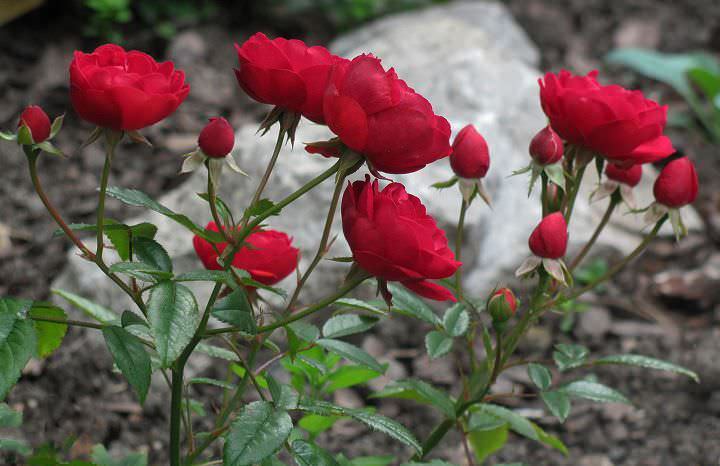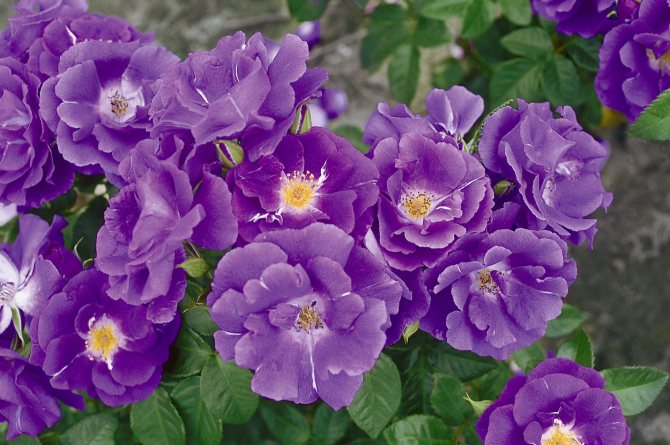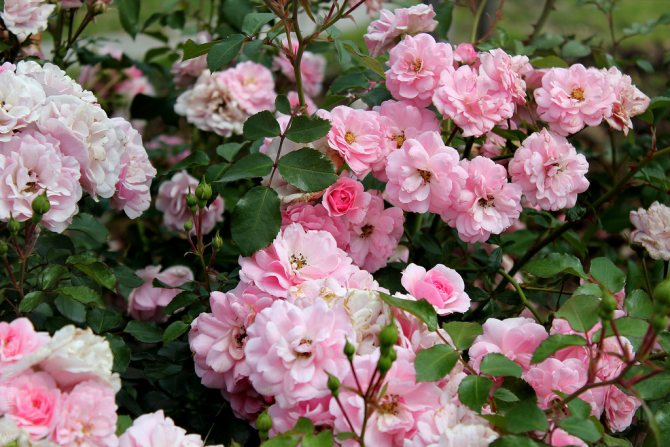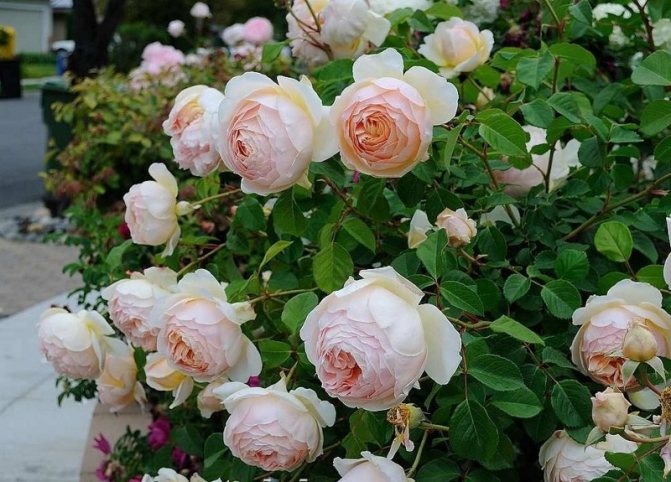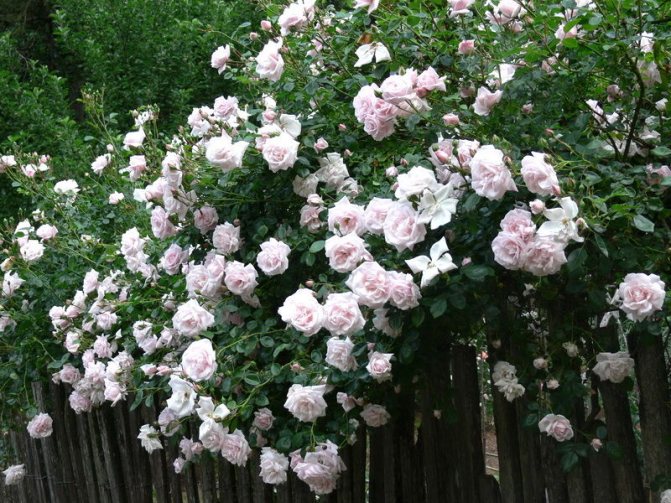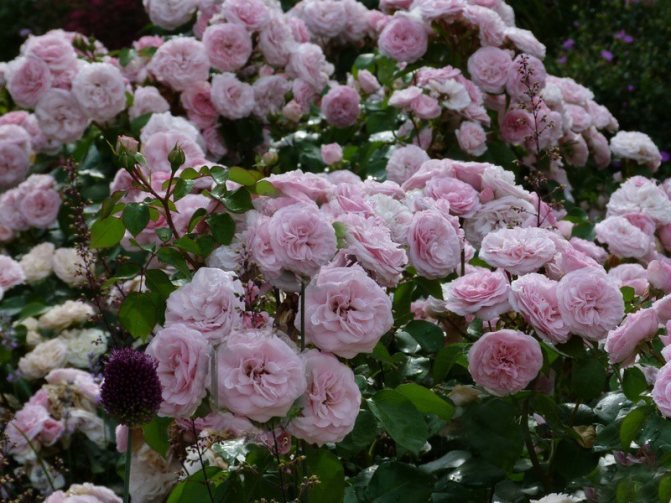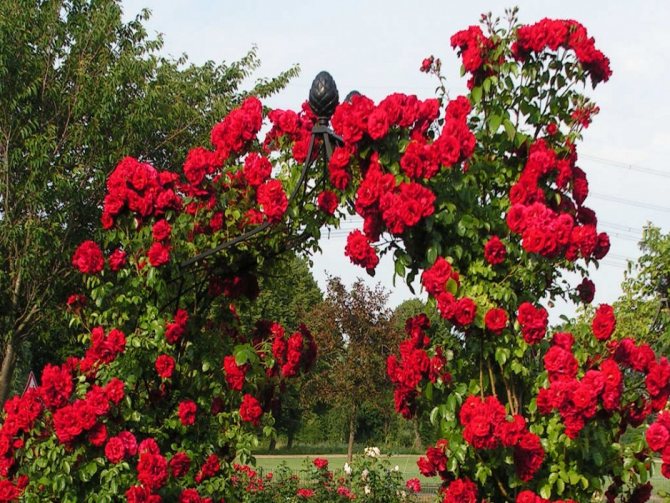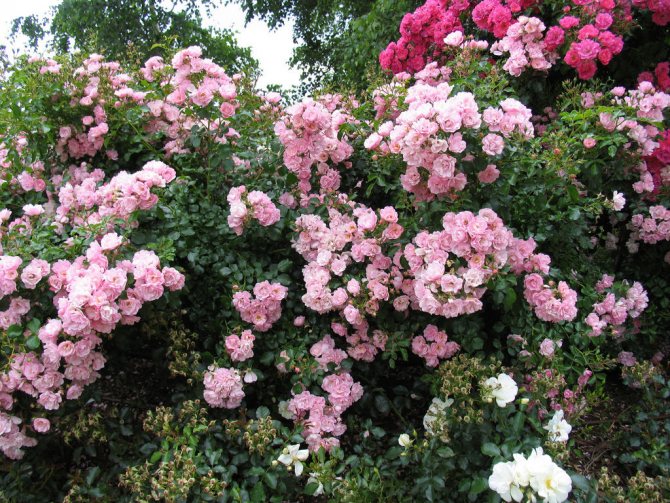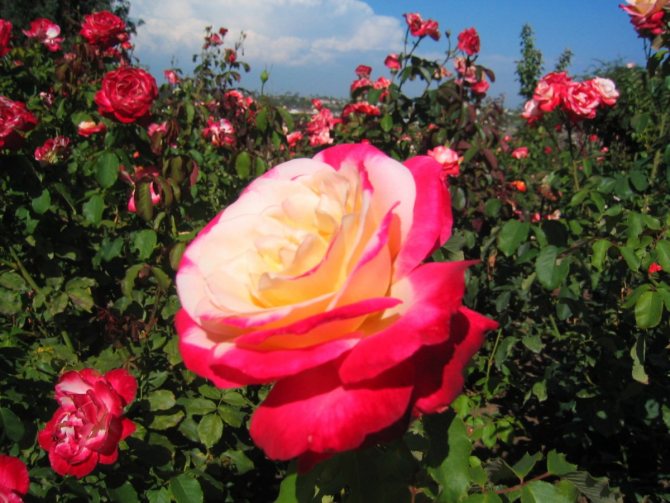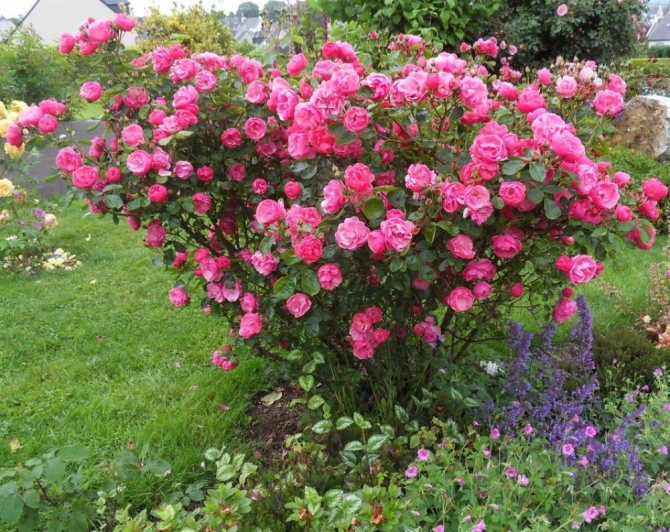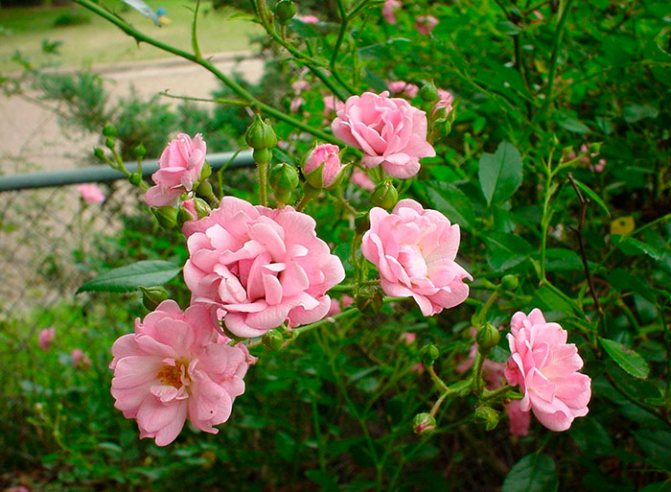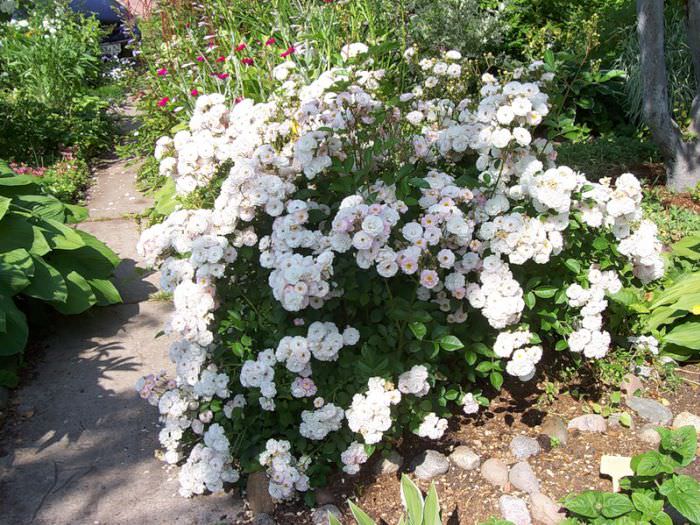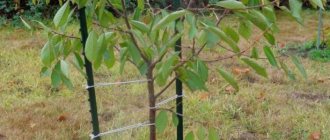Description of polyanthus roses
This hybrid, obtained by crossing a Japanese dwarf rose and a Chinese tea, has practically no thorns on its shoots. During the flowering period, each bush releases up to several dozen buds, they are collected in inflorescences, where their number can reach 50. The bush itself is low, its length does not exceed half a meter. With the timely removal of wilted buds per season, up to 100 inflorescences can appear on one small bush.
The flowers of the polyanthus rose are small - from 4 to 7 cm. The color range of the buds is all shades of pink and red, varieties with snow-white flowers are rarely found. Flowers are lush, double, cover almost the entire surface of the shoots, due to the abundant flowering of foliage on the shrub, it is almost invisible.
The bushes of the polyanthus rose are highly branched, densely covered with glossy dark green leaves. Leaflets are small, up to 5 cm long, oblong, dentate at the edges.
Important! The flowering period of the polyanthus rose is long, from mid-June to late autumn.
The best varieties
Among the most popular and well-proven varieties of polyanthus rose, plant growers note: Orange Triumph, Masquerade, Iceberg, Angel Wings, Spartak.

Orange Triumph
This variety of polyanthus rose has an intensive growth rate, its height is 60-90 centimeters. The bush forms luxurious double flowers 3-5 centimeters in diameter, which are collected in chic brushes, green leaf plates with a glossy surface. There are almost 60 petals in one flower, their color is salmon red with an orange sheen. The rose looks quite elegant, up to 50 roses open at the same time on one shoot.
Masquerade
The bush stands out for its tall stature and resistance to major ailments. The height of the plant does not exceed 70 centimeters, the color of the leaf mass is dark green. Roses are formed in large sizes, they are friable and with a pleasant scent. Up to 5 pieces are formed in one inflorescence. The flowering of the polyanthus rose is long and plentiful, the color is first yellow, and then pale crimson.


Iceberg
The plant belongs to the bush type, its height is 60-80 centimeters, the flowers are 5-7 centimeters in diameter. Polyanthus rose attracts attention with its snow-white flowers, which last for a long time, both on the bush and in the cut. Shoots are erect, on light green leaf plates with a glossy surface. The variety differs in multiple flowering, from July to September.
Angel wings
The bush (30 centimeters in height) has a neat appearance, its flowers reach 5-6 centimeters in diameter, they are painted in a light pink color. There are several varieties: non-double, where the number of petals in the flowers is 10-15 pieces, and terry - up to 25 pieces. One brush can contain up to 15 highly fragrant roses. Flowering is almost continuous, until the onset of cold weather.
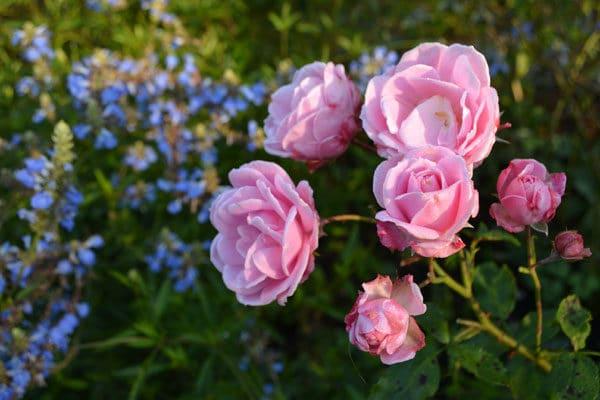

The Angel Wings rose variety can be bred both by seed and by cuttings. They choose it mainly for creating spectacular group compositions. They look especially advantageous when planting on lawns, along roadsides, sidewalks.The plant, due to its high decorative characteristics, fits perfectly into the design of terraces, balconies and verandas.
Spartacus
Polyanthus rose belongs to tall plants, its height is almost 80 centimeters. A distinctive feature of the Spartak variety is its very large flowers, which also stand out for their beautiful shape and red color. There are also specimens with orange buds, which makes the bush even more spectacular.


Polyanthus rose is truly a luxurious and graceful plant. Bushes are actively used in landscape design, they can be planted as individual garden decorations, or in combination with other flower crops, they look especially harmonious with ears of grasses. The main thing is to adhere to proper agricultural techniques when growing rose bushes and not ignore methods of protection from low temperatures.
Advantages and disadvantages
Of the negative qualities of the variety, a limited color range of buds and a weak aroma of flowers can be distinguished. These imperfections are minor, as even the pink, white and red polyanthus-looking flowers are bright and juicy in color.
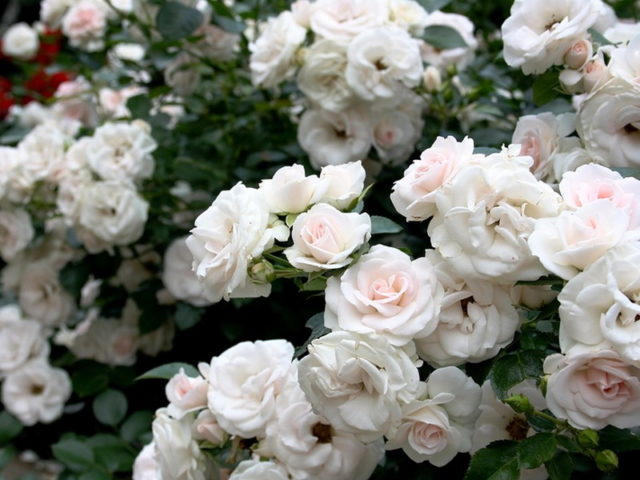

This variety does not need a strong aroma, since the flowering is plentiful, and with a strong smell of flowers, the smell will be too cloying.
Advantages:
- unpretentiousness;
- resistance to pests and diseases (including fungal);
- good survival rate in the open field;
- violent and long flowering;
- brightness and number of colors does not depend on sunlight and shade;
- polyanthus rose (angel rose) can be easily obtained by growing from seeds.
In addition, this flowering crop is resistant to frost and excess moisture in the soil.
Care features
Caring for polyanthus roses is very simple. In most cases, for the full development of crops, it is only necessary to prune and water in a timely manner. In some situations, bushes may require treatment for fungal infections and insects. Obligatory care measures are:
- Mulching the soil to ensure a normal moisture level in the soil.
- Tying and direction of growth.
- Pruning the shrub to form a lush crown and encourage new branches to grow.
- Watering, which will depend on the climatic conditions of a particular region.
- Removal of faded flowers.
- Loosening the soil.
- Application of mineral complex and organic fertilizers.
- Prevention of diseases, as well as protection from various pests.
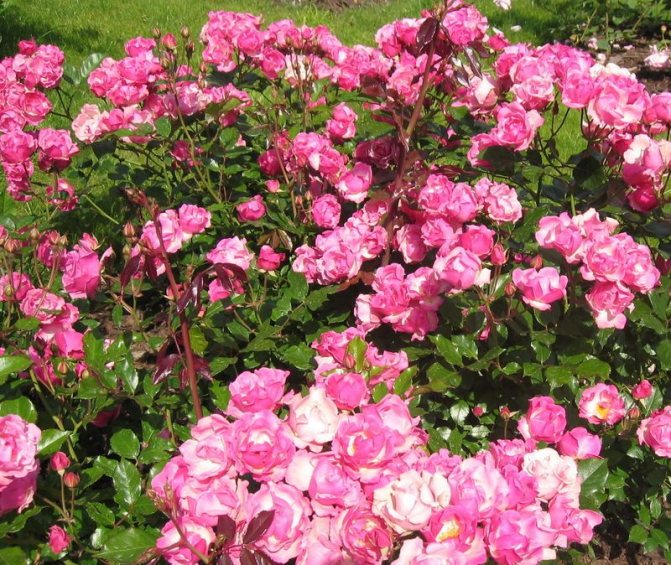

Features of growing polyanthus roses
The process of planting and growing this flower crop is simple. You just need to follow all the rules of agricultural technology for polyanthus roses. In the south of Russia, it is recommended to plant a flowering culture in early autumn (in September), in the central strip in spring (from mid-April to the end of May). It is important that the soil warms up to + 10 ° C minimum.
Site selection and soil preparation
For planting, choose fertile soil, equip each planting hole with good drainage. The planting site (flower bed) should be well lit by the sun, but protected from strong winds and drafts. In partial shade, polyanthus roses will also not lose their decorative qualities.
Immediately before rooting the seedling, the soil must be well loosened. In the process of digging, fertilizers are introduced into the soil: humus, complex mineral fertilizers, wood ash, a little sand. You can also use organic fertilizers (chicken droppings, mullein), they are applied at the rate of 1 kg of feeding per 1 flowering bush.
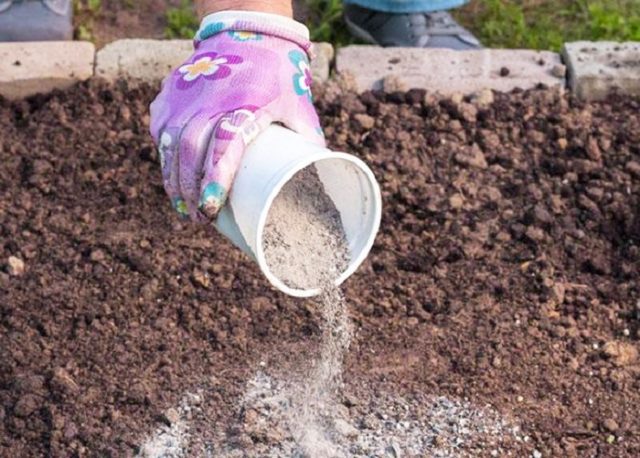

Important! If purchased complex fertilizers are selected for feeding, the packaging should be marked: “intended for roses”.
The rose does not like acidic soils, it blooms well on neutral soils. Sand is added to make the soil lighter.If the polyanthus rose is planted on sandy soils, it does not need an additional baking powder.
Landing scheme
In the process of rooting, it must be borne in mind that the underground part of the seedling (rhizome) must be the same size as the shoots. The distance between the bushes is 0.4-0.5 m, between the rows - 0.6 m.
Landing Algorithm:
- Dig a planting hole 2 times deeper and wider than the rootstock of the seedling.


- At the bottom of the pit, you need to pour a layer of sand or expanded clay, sprinkle it with fertile soil mixed with 25 g of fertilizer for flowering plants.
- Place the seedling on top, straighten the roots. It is important to make sure that the root collar is a couple of centimeters below the soil level.
- The root of the seedling is covered with loosened soil.
- The plant is watered.
- After watering, the bushes need to be spud.
From above, the moistened earth is crushed with sawdust or pine needles.
Landing rules
This rose is capable of growing and blooming in all climates. But in order to achieve a bright and abundant flowering, it is necessary to study some rules for the care and planting of polyanthus roses. The varieties of this flower are not afraid of the increased acidity of the soil. It is best to plant these crops on a loose and well-fertilized substrate that has neutral acidity.
As for the landing site, it is recommended to select a well-ventilated and sunny area. Seedlings of polyanthus roses will develop well in partial shade, however, the branches of the bushes may sag under the weight or stretch out. In such a situation, it is necessary to additionally organize support for the bushes.
Almost all varieties of polyanthus roses do not like shade, so they are not recommended to be planted in the garden near trees. In shaded areas, they will grow slowly and bloom reluctantly. In addition, the root system of trees takes all the nutrition and moisture from the rose. It is best to protect these bushes from the north-east and north from the wind. You should also pay attention to the fact that plants are not recommended to be planted in the area where the air stagnates, for example, in the lowlands. The site should be slightly higher than the rest of the territory, so that with the arrival of spring, melt water does not accumulate under the bushes.
Polyanthus rose care
After planting, after about half a month, new shoots will appear on the rose bushes. At this time, the culture needs particularly careful care.
Pruning
This procedure is carried out for the first time before and after planting polyanthus roses. First, all damaged shoots on the roots are removed from the seedling, the shoots are cut to a length equal to the root.
Important! After planting, all the shoots of the rose bush are shortened by a third.
In the fall, the processes are shortened again, leaving no more than 8 buds on each. It is important to cut dry buds during the flowering period, this will stimulate the emergence of new ones. Broken, dried shoots are also regularly removed.
The next year, in the spring, after removing the protective insulation, sanitary pruning of polyanthus roses is carried out: dry and old stems are removed, and the young are shortened by a third.
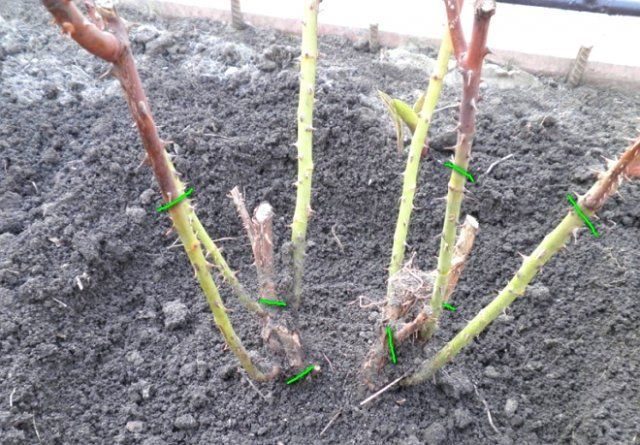

Mulching
After planting and each watering, the soil around the rose bush is mulched. For this, sawdust, wood chips, needles are used. The procedure will allow you to retain moisture at the root of the plant, protect it from temperature changes.
Top dressing
It is recommended to feed polyanthus roses at least once a month. To do this, use ready-made complex fertilizers for roses. You can also do watering with chicken manure diluted in water (1:20), dig up the soil with humus.
Watering
If the summer is rainy, polyanthus roses do not need watering. If there is no rain, rose bushes are watered every 3 days with settled water at room temperature. After watering, the soil must be loosened.
Protection against diseases and pests
To prevent the ingress of fungal spores to the rhizome of the rose, humus is thoroughly dried in the sun before feeding.For the same purpose, pruning of bushes is carried out only when it is sunny and warm outside. At the first signs of a fungal disease, the bush is treated with appropriate preparations (fungicides).
Attention! Polyanthus roses are resistant to most garden pests, but aphids can bother them. To prevent its appearance, roses are sprayed twice a season with insecticides.
Preventive treatment against pests and diseases
Polyanthus roses are prone to fungal infections. Preventive treatment with fungicides several times during the season will significantly reduce the risk of developing the disease.
Powdery and downy mildew. It develops in cold and rainy summers if the plantings of roses are thickened. A whitish powdery coating appears on the leaves and young shoots of roses, which quickly spreads throughout the plant. The disease is difficult to treat. The damaged parts of the rose are cut and burned. As a preventive measure, in the spring, twice in the summer and before sheltering for the winter, the rose garden is sprayed with a Bordeaux mixture.
Rust. Fungal disease, which is manifested by the appearance of yellowish and brown spots on the foliage. Gradually, the leaves dry out and fall off. Measures to combat the disease are the same as with powdery mildew - removal of diseased parts and treatment with Bordeaux mixture.
Black spot. Spores of the fungus settle on the leaves in black spots on the front side of the leaf plates. Plants can be saved by treatment with fungicides (copper sulfate, karbofos).
Pests
Aphids and spider mites are malicious and common pests of roses. Pests inflict especially great damage on plants in a greenhouse or greenhouse. Dry air contributes to this.
Small insects can be seen on leaves and shoots, where they accumulate in the hundreds. They suck the sap, oppressing the plant.
At the first signs of infection, roses are sprayed with soapy water (100 g of laundry or green soap per 10 liters of water). The treatment is repeated once a week. In case of severe damage, insecticides will help: Aktara, Aktellik.
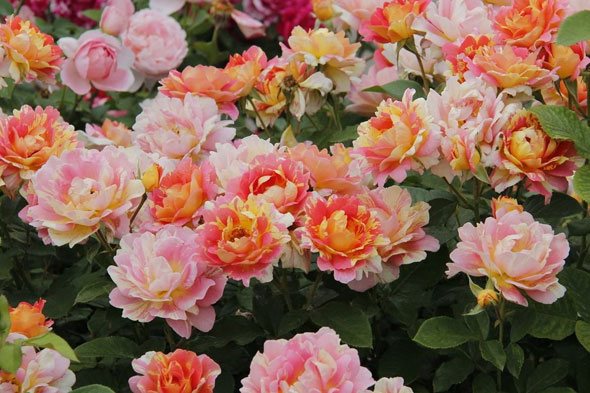

Leafwig. The insect lays eggs on the leaves, wrapping the clutch in them. The larvae feed on leaves. To destroy the pest, foliage folded into a tube is removed. Roses are sprayed with Aktara.
Growing a polyanthus rose from seeds at home
This is the only type of rose that can be grown from seed. The seed is harvested from adult plants over 3 years old. It is they who can give high-quality seeds from which a full-fledged decorative flowering culture will grow.
Seed collection
The seed is harvested in the middle or late summer after the flowers have wither. Seed boxes should be slightly unripe, not overdried. The box is cut or husked by hand, the pulp is separated and the seeds are pounded.
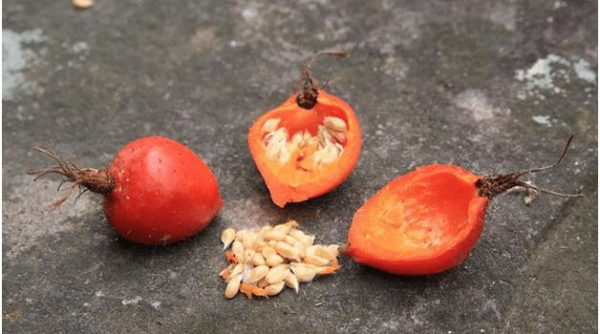

Damaged or rotten seeds are removed. Then clean, strong seeds are washed in a weak, cold solution of manganese. Hollow seeds floating on the surface of the liquid are thrown away. Then they are mixed with sand, wrapped in gauze soaked in hydrogen peroxide (3%).
Stratification
In order for the reproduction of a polyanthus rose by seeds to be successful, they must be stratified (soften the hard shell) before planting. For this, the seeds are spread in a thin layer on the surface of a cloth dipped in water, and covered with the same moistened material on top. The fabric can be rolled, wrapped in plastic, or sent to a plastic container. Then the seeds of the polyanthus rose are placed in the refrigerator on the lower shelf for 1.5-2 months. A periodically drying cloth is moistened.
Important! Every day, the cloth is unrolled and checked for rotten or moldy seeds. If they appear, they are immediately removed.
Germination and planting
As soon as the hard shell on the seeds of polyanthus roses begins to disperse, they can be sown in separate pots.The soil for planting is chosen fertile, light and loose; you need to mix it with a small amount of sand. Before planting, the soil must be sterilized. To do this, it is heated in the oven, or poured with boiling water, having previously diluted manganese in it. Peat can be used instead of soil.
Planting containers are filled with earth, make small depressions, and plant seeds in them.
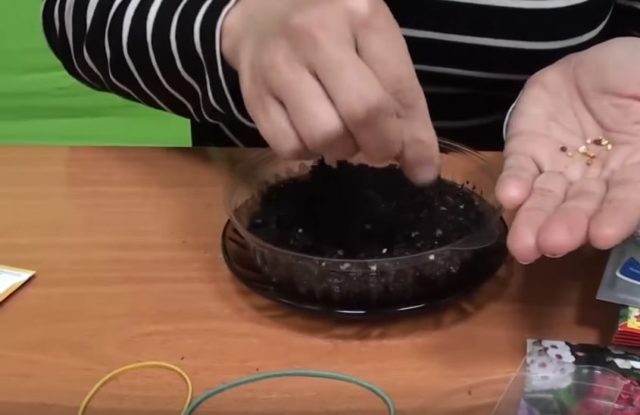

Sprinkle on top with a thin layer of fluffed earth, watered. The pots are placed in a well-lit place. Daylight hours for seedlings should be at least 10 hours. The air temperature should not fall below + 18 ᵒС. Before the first shoots appear, the seedlings are watered as the soil dries. Every day for half an hour, the windows are opened, airing is done - growing seedlings need access to fresh air. The video shows how polyanthus roses are grown from seeds:
After about 2 weeks, the first shoots will appear. As soon as they stretch out a little, you can add fertilizing with nitrogen, potassium or phosphorus. Fertilizing will help the plant grow stronger.
In the spring, before planting, the seedlings of the polyanthus rose are hardened: they are taken out into the street at freezing temperatures for several minutes. The air bath time is increased daily. 2 weeks before planting, rose seedlings are mulched with perlite. This will prevent the development of fungal diseases.
Landing in open ground
Polyanthus roses of the first year are not recommended to be planted in open ground, they may not take root. In the second year, mature plants are rooted in the garden or in the garden, as soon as the probability of night frosts approaches zero. This is the period from mid-May to early June. At this time, the first buds may already appear on the grown rose bushes.
Important! Before planting, the roots of the rose are cleaned of old planting soil. This is done very carefully, trying not to damage the root processes.
The planting hole is dug 2 times wider and deeper than the rhizome of the plant, it should fit freely there. Bushes of polyanthus roses are planted according to the scheme 40X60 cm. A small layer of fertile soil is placed on the bottom of the pit, mixed with 1 tbsp. l. complex mineral fertilizer.
The seedling is placed in the center of the hole, sprinkled with fluffy soil mixed with a small amount of sand, watered and mulched. After a few days, the soil around the bush is loosened.
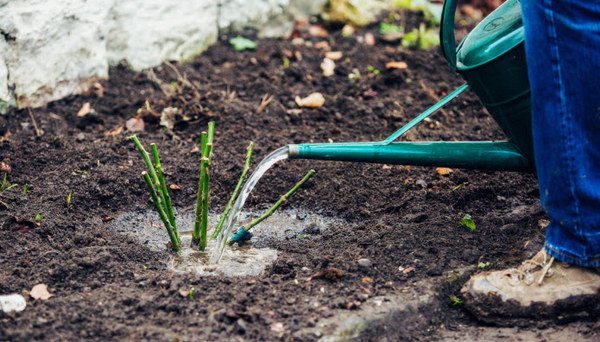

Important! Watering the seedlings is carried out as the earthen coma dries.
In what conditions to grow


We will find out where it is better to plant a polyanthus rose, and what kind of soil the plant needs.
Location and lighting
Polyanthus rose will develop and bloom as favorably as possible in a well-lit area. The bed should be open and well ventilated: such a place will be devoid of stagnant air. Shady areas are not suitable: even though the rose can take root there, its branches will become too long, elongated.
Temperature and humidity, drafts
This variety of rose is the most cold-resistant, so polyanthus varieties can be grown even in the north, in Siberia. However, the plant needs shelter for the winter - do not forget about it.
Moderate air humidity is needed, but it is better to protect the rose from drafts. Although it tolerates cool gusts better than other varieties.
Priming
Polyanthus rose is undemanding to the composition of the soil and can grow even in acidified soil. However, loose, nutritious and neutral soil is the best choice.
Other breeding methods
It is possible to grow polyanthus roses not only from seeds, it will be possible to propagate them correctly by cuttings or by grafting on rose hips.
To obtain cuttings, shoots of polyanthus roses, covered with dense bark, are chosen. They are cut early in the morning or late in the evening, when the sun has already disappeared. There should be no flowers on the shoots: choose a period before or after flowering.
A suitable process is cut with a sharp knife at an acute angle. In the same way, they divide it into parts, the length of each must be at least 15 cm.Each quarter of the shoot should have at least 2 leaves and the same number of buds. The lower leaves and thorns are removed.
Then the cutting is soaked for several hours in Kornevin's solution. After it is rooted in loose fertile soil, watered abundantly, covered with a jar to create a greenhouse effect. Within a month, the seedling obtained by cuttings will take root.
Grafting of a polyanthus rose on a dog rose is carried out in late spring or summer. Choose a healthy, well-growing and flowering rosehip bush that is at least 2 years old. With an incision, its bark can be easily removed, the root collar of the bush should be no thinner than 7 cm.
For the scion, a stem of a polyanthus rose, covered with dense bark, which easily breaks off thorns, and has several buds, is suitable. The plant should not bloom during this period. The cut shoot is divided into cuttings and wrapped in a damp cloth. It is best to vaccinate in the early morning, immediately after cutting off the shoots.
Florist reviews
According to the reviews of amateur florists, polyanthus roses are perfect for growing in most regions of Russia, which is due to its excellent resistance to prolonged rains and increased winter hardiness. As a rule, such varieties bloom a little later than other varieties of roses, but compensate for such a delay with abundant flowering before the onset of tangible frosts.
Polyanthus rose is not afraid of waterlogged soil, but still feels best with abundant, but rather rare watering. In recent years, miniature polyanthus varieties have become very popular in indoor floriculture and are grown even by inexperienced, novice amateur flower growers.
Sources:

